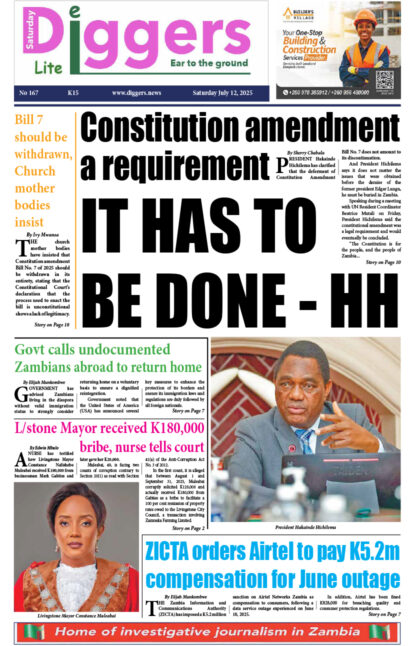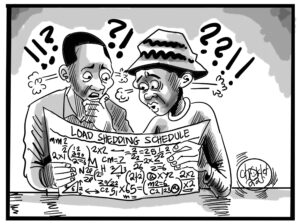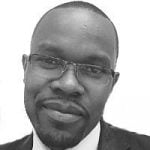Eighty-four-year old Mpundu Mutembo popularly known as ZANCO is Zambia’s symbol of freedom and his elegant statue erected at the Freedom Square in Lusaka’s Kamwala area is a hive of activity during every national event.
Born in 1st March 1934 in Chinakila village of Mbala District in Northern Province, ZANCO is still alive, but he is a very angry man because, according to him, the Zambian government has not only neglected him, but has also failed to honour its pledge towards his contribution in the liberation struggle under the Zambia African National Congress.
He broke the chains of captivity in full view of the colonial masters and photographers who associated his strength to magical powers, they say, and the ‘superman’ enjoys to narrate his story. But he always starts by expressing his grief against the government of the day.
“They will pay me. Even if they pretend as if they do not want to pay me, they will. They are listening, they will pay me because I do not know where they even take that money. Even the next president who is going to come will pay me because they are sitting on my freedom,” ZANCO said during a fundraising event organised by NAREP under the Africa Freedom Day umbrella.
“Today is 25th May, Africa Freedom Day, but they didn’t even invite me to State House? Who has sat on my freedom? Let the one who has sat on my freedom explain why he/she has done so? I have not committed any crime, I am a symbol of freedom for the nation. That freedom statue you are seeing cannot be changed and there is nothing like ‘let’s go for elections to choose another symbol of the nation no!”
He retold the narration of his involvement in the struggles and how he became a hero.
“I joined politics when I was eighteen years old. Luckily when I joined politics, I found people like Mwansa Kapwepwe and Kenneth Kaunda who taught me many things. I was well trained. I became National Youth Chairman for the Zambia Africa National Congress (ZANC) and I was a very listening youth. Kaunda was a very good teacher for me. The whites were very difficult people. There was a system that when the central committee writes a letter to be delivered to the government office at State House, they gave me to deliver it. But I didn’t even know how to get to State House. I went there until I got to the government house. There was no one I could ask around to direct me inside. The police officers just looked at me and this messenger came to find out how I got there. Then I said ‘sir, I have got a message from Kaunda’. He said ‘a message from Kaunda?’ then I said yes and he said ‘come’. The white police officers looked at me surprisingly and I got in,” ZANCO narrated.
“That is how that Boer took me to his office where he then gave the letter to his secretary to read it. Then the Boer said ‘okay, go and tell Kaunda that I will reply before one o’clock’ then I said ‘no objection.’ Then he put a date stamp on the letter. Just as I was leaving, the governor held me by my hand and charged me with an offence if criminal trespass. They said where did you get permission to enter this place? The I told them the messenger had allowed me to enter and moreover I did not break the wall when entering, I used the gate. That is how they took me to Police force headquarters for questioning. When the police heard about the story, they actually suspected that maybe I had a suicide bomb. They then took me for an x-ray where they squeezed me in all forms like those people who prepared caterpillars. They didn’t find anything. They said ‘you, How did you enter State House?’ I said through permission granted,” he said.
He explained how he punched an inquisitive colonial guard and got a ten-year prison sentence.
“That is how they took me back to force headquarters. As I was still seated in their office, I just heard on the radio that ‘Governor received a letter from Kaunda [and] here is a reply’ and the news continued. After that, they couldn’t find me with an offence so they put me in a Land Rover with an escort of police and took me back to Kaunda and said ‘here is your man. Ask him, we have not assaulted him.’ At one point, I did hit a white man and he started bleeding on the nose. So they charged me with five offences. When I narrated to Kaunda that I was beaten, this white man asked me to demonstrate how I was beaten and in demonstrating, I hit him on the nose and he started bleeding,” ZANCO narrated.
“The matter was then taken to court and I was sentenced to ten years. Whilst in prison, I wrote an appeal against conviction. The prison superintendent read my appeal just In Chimbokaila prison and promised that he would take it to court. I stayed in prison for six months before going to the Lusaka High court. There, they actually wanted to increase my years after the state attempted to amend the offences that I was charged with. My lawyer then objected to that and also filed that unless they cancel the old offences so that we start everything afresh. So the judge was convinced and that is how I was acquitted. They took me back to remand prison to wait for fresh charges. After staying in remand for 14 days, they took me back to court and the funny part was when we went there, government Had no grounds to charge me and I was acquitted.”
He further explained how he was chosen to take a challenge of becoming a symbol of the nation.
“So from there we went to the UNIP house along freedom way and even the Kapwepwes and the Kaundas were there. And this white man came on a horse with others and said to Kaunda, ‘Kaunda, tell your people to stop harassing whites, government will be in your house.’ Kaunda replied and said ‘if government will be in my house, i will tell them to stop harassing whites.’ A question followed from the Governor Sir Evelyn Hone who said ‘Kaunda what type of a symbol are you going to use in your government?’ ‘shall we get from the Victoria falls, or the Kalambo falls, Muchinga mountain? They said all the natural resources we had in Zambia at that time. Kaunda responded by saying ‘our symbol of the nation will come from a human being.’ They said who is that one? Kaunda called me and said ‘ZANCO?’ I said ‘Sir!’ Then he said ‘this one is going to the symbol of our nation,” ZANCO narrated.
“He then told them that before you take him, give us 10 minutes. They took me and gave me all the instructions and explained everything that where you are going, the country is Zambia and we will be under one Zambia one nation. After getting all the instructions, the whites got me in the car and we started driving along Independence Avenue which was then called King George Avenue. They took me to a conference room where we found a lot of whites with guns and so many cameras. They started interviewing me about my qualification, My family and the village I came from. After the interviews, they took me and removed all my closes that I was wearing, I remained completely naked and they gave me a short, the one you see depicted on the freedom statue. They handcuffed me and took me outside.”
He claimed that the colonial guards chained him and started mocking him, before he stunned them by breaking free from the chains.
“Outside, the whites told me that ‘now ZANCO, break the chain, if you fail we shall shoot you.’ I was surrounded by 18 armed Boer army officers. I did four rings for the chain to break. After breaking the chain, the governor surrendered. So they asked me to sit down with my legs folded and if you go to Ndola and see a statue of a man seated, that’s me. They gave me clothes to wear and told me that ‘from today, you are a government property and you will not participate in politics. From today, you will start receiving 50 pounds per month and this government of yours that you have told us about, they will be giving you five percent per annual budget, and the white man was writing,” ZANCO said.
Asked if he ever got the entitlements, he said no.
“No they don’t give me. That is the problem with politicians. I am suffering, I walk on foot, I don’t eat properly, some of my children have died in poverty, I can’t even take my children to school. Where do I find the money? Very shameful. Some of them God will burn them if they don’t know. After breaking the chain, Kaunda took me to state house and I was the first one to sleep in State House. I slept there for fourteen (14) days. I was sworn by Sir Evelyn Hone, the last governor in the colonial days. They also bought me three suites and put me on a flight to Mbala though they didn’t know that that was my village,” ZANCO said.
“There in Mbala, they gave me my own land. They also gave me a responsibility to look after a place where the freedom fighters who had died were buried. They also gave me another house which was left by the Germans and asked the district commissioner to help me process the ownership papers. That house I didn’t live in it, I gave it to UNIP to be using. The whites are still coming to watch or see the 1914 war in Mbala.”
He also disclosed that he was the second man from Kaunda to be issued with a National Registration Card (NRC).
“When time for issuing NRCs came, they called me at cabinet office to consult me who should be given the first NRC. I said the first person to be issued an NRC is Kaunda because he is the founder of the nation. I was given the second NRC. And if you look at my NRC, there is no tribe. So those who are saying ‘no, let’s change this and that on the NRC,’ Zambians be careful. I home Mr Lungu is listening wherever he is, he doesn’t even know that I am in Lusaka. I am here to protect the changing of NRC particulars. We are under One Zambia One Nation. The third person to get an NRC was (Munkalumba Siwale)?, number four was Simon Mwansa Kapwepwe, number five was Paul James Kalichine, Number six was Rueben Chitambika Kamanga, number seven was Erickton Sikalumbi ,number eight was Grey Zulu, and number nine was Lewis Changufi. Those were trustees in Zambia,” narrated ZANCO.
“Please do not destroy this country, we shall remain united. If you want to become president, be loyal to all the tribes in Zambia because people I am telling you, tribal war is very deadly. I am sad today because government didn’t even invite me to the freedom statue as the honour of that struggle. I fought for this country and I own of it. One day God will show them that I am here. They will remember me, they will pay me!”


















